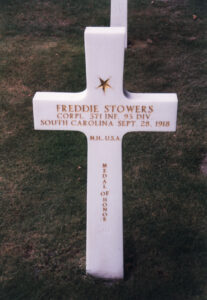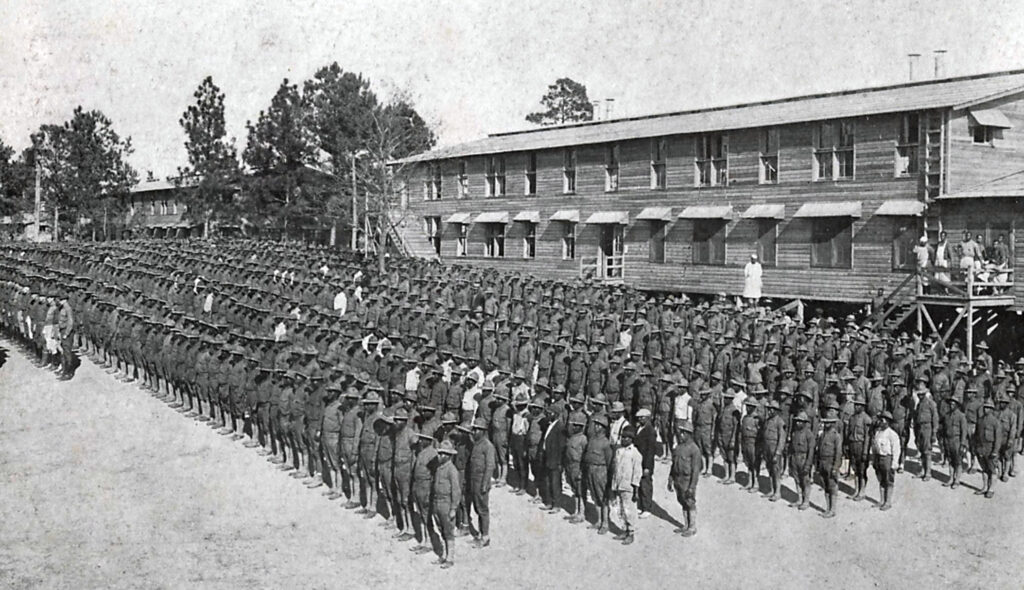EDITOR’S NOTE: This site is dedicated to the Relic Room’s Vietnam exhibit, but when you come to see that, we urge you to check out the rest of the museum, which celebrates South Carolina’s entire military history. When you do, please ask to see the display honoring South Carolina’s own 371st Regiment.
February 28, 2023, is 371st Regiment Day in the state of South Carolina, having been declared such by a resolution passed by the S.C. Senate a week earlier. The resolution was sponsored by Sen. John Scott from Richland County.
That means a lot at the South Carolina Confederate Relic Room and Military Museum, which has both flags that the 371st carried into battle in France in the First World War, and a display devoted to the unit. It means a lot to Fort Jackson, where the 371st was formed in 1917. And it means a lot down in Charleston, where Mayor John Tecklenburg will lead a tribute honoring the unit at 10 a.m. on the special day at Charleston City Hall.
The 28th is the 104 anniversary of the unit’s demobilization in 1919, which took place at what was then called Camp Jackson outside Columbia. But what was the 371st Regiment?
It was a unit of South Carolinians that distinguished itself nobly in a very different era for the U.S. Army.
The regiment came together at Camp Jackson in October 1917, made up primarily of African-American draftees from South Carolina. It had technically been formed in August, but the new soldiers couldn’t arrive until after the cotton crop had been harvested. It was of one of twelve “colored” regiments created in the Army at that time.
Of course, given the time, the officers were all white.
The unit headed to France the following April. Its officers and men expecting to fight as part of the U.S. 93rd Infantry Division. But that division was never fully organized, and upon arrival, the regiment found it attached to the French army. The men of the 371st had to turn in all their gear. They were issued French equipment, and underwent French training.
It is because of this experience that the 371st has been termed the “Orphan Brigade,” and it was the subject of a Lunch & Learn lecture at the Relic Room in 2019.
Orphaned or not, the 371st went on to distinguish itself in combat in France, as part of the French 157th Infantry Division. The South Carolinians fought in the Argonne, and were on the front line at Verdun. As a unit, they were awarded the French Croix de Guerre. Years later, one member of the 371st, Freddie Stowers, received the Congressional Medal of Honor posthumously for his heroic actions in 1918.
The unit was honored when it came home. According to Sen. Scott’s resolution, “the City of Columbia came together to support the heroes. A mass meeting was held at Sidney Park Church to launch a fundraising effort for a community reception at Allen University. The grand event was held on February 29, 1919. Governor Robert Archer Cooper and African American community leaders, including I.S. Leevy and C.A. Johnson, spoke in honor of the regiment.”
The flags of the regiment were presented to the community. Those are the flags that reside today at the Relic Room.
About the South Carolina Confederate Relic Room and Military Museum
Founded in 1896, the South Carolina Confederate Relic Room and Military Museum is an accredited museum focusing on South Carolina’s distinguished martial tradition through the Revolutionary War, Mexican War, Civil War, Spanish-American War, World Wars I and II, Vietnam, the War on Terror, and other American conflicts. It serves as the state’s military history museum by collecting, preserving, and exhibiting South Carolina’s military heritage from the colonial era to the present, and by providing superior educational experiences and programming. It recently opened a major new exhibit, “A War With No Front Lines: South Carolina and the Vietnam War, 1965-1973.” The museum is located at 301 Gervais St. in Columbia, sharing the Columbia Mills building with the State Museum. For more information, go to https://crr.sc.gov/.




Comments are closed.